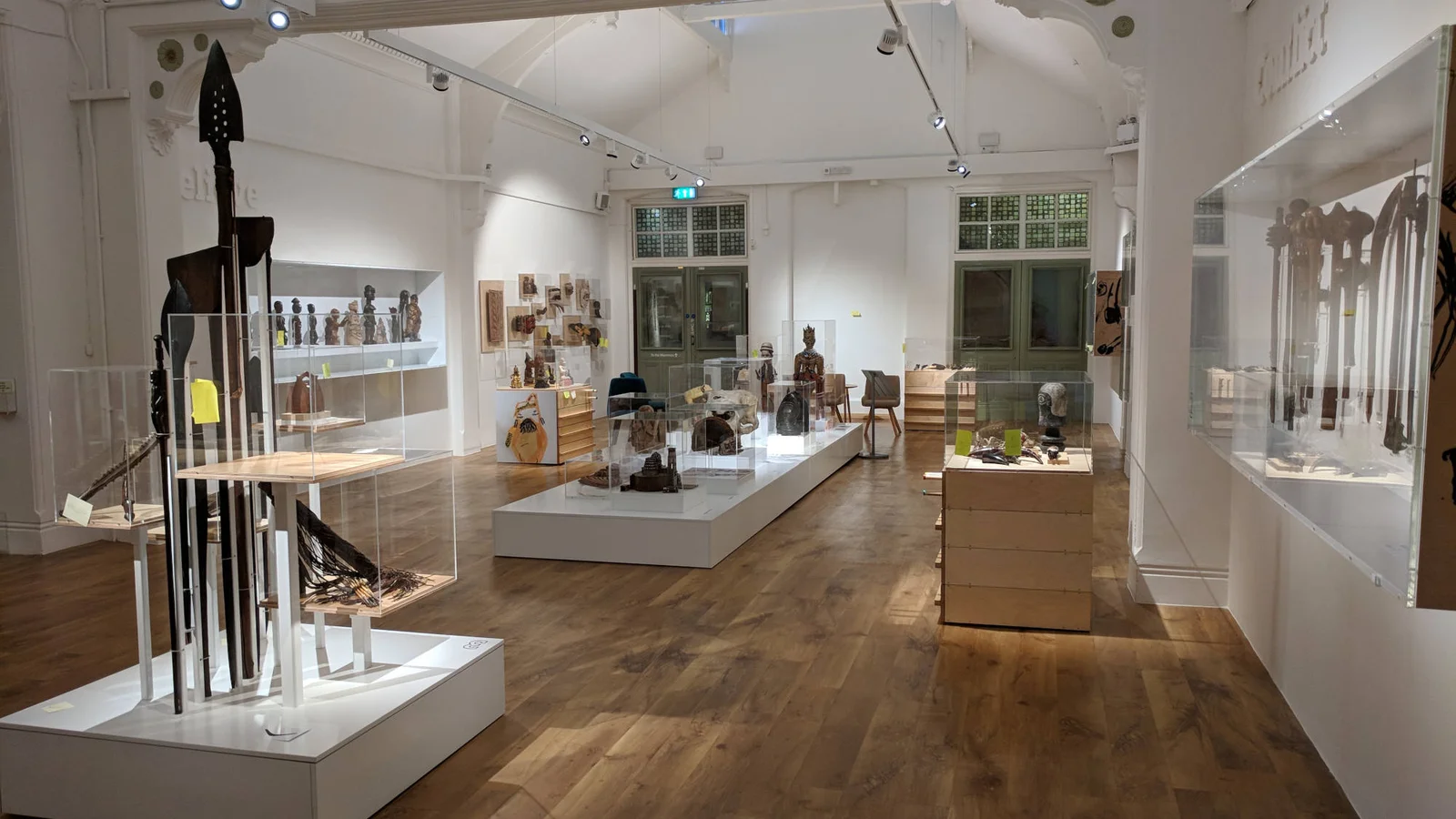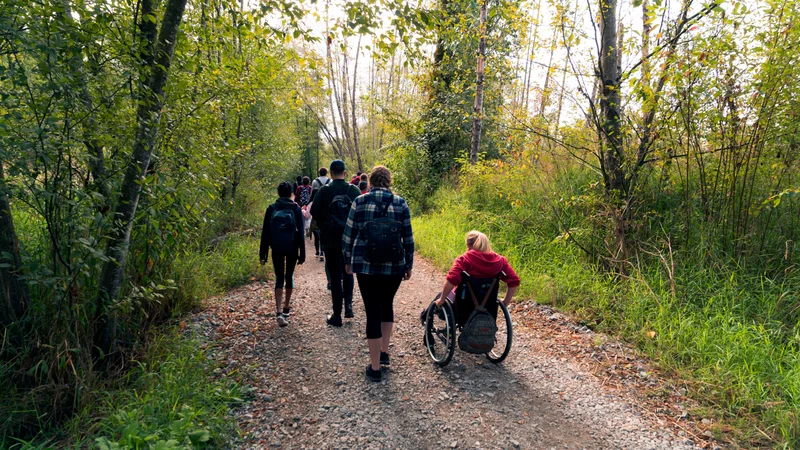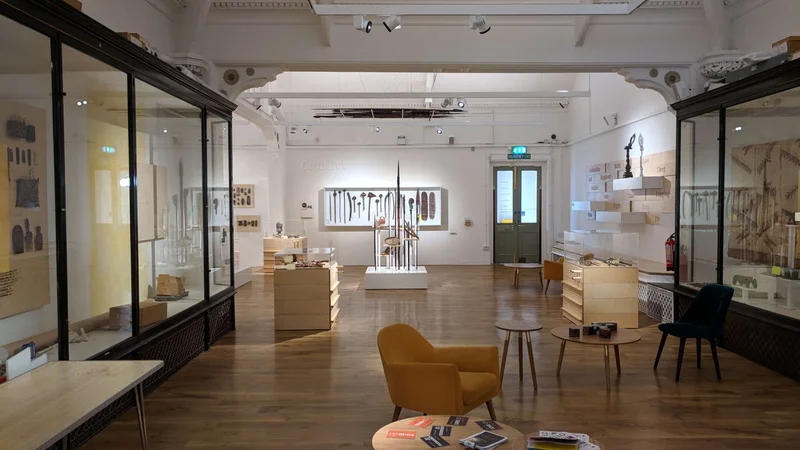Museums and art galleries play pivotal roles in navigating complex problems. The objects and narratives on display provide visitors with powerful experiences of meaning and context for themes such as climate change, decolonization, and systemic racism. But these themes are also freighted with trauma: personal trauma, cultural trauma, intergenerational trauma. And this trauma is not easily managed. Visitors can be traumatized or re-traumatized when visiting exhibits and galleries. Staff can be directly or vicariously traumatized by interactions with visitors and colleagues. Everyone can be traumatized by organizational turbulence, burnout, and emotional fatigue.
In environments of strong emotion and uncertain pathways, personal skills determine the outcomes. Those skills include, most fundamentally, self-awareness and empathy: how we stay in touch with ourselves and how we respond to others. These abilities require constant attention, reinforcement, and renewal. But effective personal skill also entails a variety of further capacities such as grounding, presence, self-regulation, containment, listening, and boundaries. And these, in turn, hinge upon the strategies we use to determine when and how we communicate and interact with others. Considerations such as body language, voice tone, language, timing, pacing, waiting, and many others all play a crucial role in challenging situations. If we misjudge or overlook one of these factors, things tend to escalate or fall apart.
We need to be authentic and congruent in the skills we use to understand ourselves and engage with others. We need to be consistent in how we apply strategies and tactics in situations governed by the emotional reactions of people (which is, actually, most situations). Getting it right is hard — and is the reason we use the word wisdom in describing people who get it right most of the time.
How can each one of us develop our personal skill, in a professional space, such that we feel more comfortable and confident in navigating challenging situations? How might we help community members (staff as well as visitors) work toward emotional health? How might organizations develop strategies to ensure that employees don’t slide into trauma or deep distress? How might they promote wellness and resilience within the organization and for the wider community?
This training addresses these questions by providing participants with six sessions of skill development training and practice for cultivating mental health and wellness, building capacity, and cultivating healthy outcomes for everyone.
A Trauma Aware Approach
As museums and galleries increasingly tackle themes involving trauma, they confront a basic hurdle: such environments are not contexts for psychotherapy. Most museum and gallery staff are not counselors. Trauma does not always (or even usually) fit neatly into the ways that museum and gallery educators design the intended experiences of visitors. Navigating trauma can be chaotic and disorienting, both for those experiencing symptoms and for those trying to help. Outcomes can be hard to define: what do terms like health, growth, support, or progress mean in the context of trauma? Things can go sideways quickly and with much damage to all.
What’s required is a trauma-aware perspective scaffolded appropriately with training, personal development, and ongoing support. These elements are essential in preparing staff for crisis events that will inevitably arise — often in unexpected moments when people feel unprepared. Identifying and developing a trauma-aware cohort within the organization, and supporting them to learn trauma-aware tactics and skill, are crucial steps in helping to build greater capacity for navigating these complexities.
Assessing and Developing Skill
Many people in museum, gallery, and educational contexts have a general awareness of the meaning of terms such as trauma-aware and trauma-informed; many have participated in educational workshops about trauma. This is encouraging. However, the complexities of trauma — and the personal skills required to navigate them — cannot be fully captured with traditional educational methods and attempting to do so can lead to ongoing problems. People who learn the basics of trauma can develop the mistaken belief that applying this new knowledge to an actual situation involving trauma (a gallery visitor who has a strong emotional reaction to an exhibition, for example) will be reliably helpful. Staff can develop a false sense of skill in approaching interactions with visitors (and with colleagues). They can mistakenly believe that a trauma-aware approach involves action toward others without requiring personal introspection, development, and trauma healing within themselves (the historically persistent privileging of intellectual capacities within educational contexts such as museums, galleries, and universities deepens this challenge). They can approach empathy as an outward skill rather than an inward state of being. Many such complications may arise, and any one of them can cause harm to staff, visitors, and the wider community.
Trying to implement a trauma-aware approach by telling people about trauma — without supporting them in skill practice, self-reflection, and personal growth — is fraught with risks. It’s like encouraging someone to step into the cockpit of a helicopter after reviewing the flight manual and thinking about where they want to fly. Thinking about trauma and reading about trauma are not enough. Interacting with traumatized people as experiments in skill development can lead to various kinds of unintended harm. This is a situation in which a little knowledge can be dangerous.
In this training, participants will have the opportunity to learn about the basics of trauma, but most of their time will be spent on themes of personal development: self-awareness, empathy, self-regulation, personal insight, and related skills. How we interact with others is mostly contingent upon how we deal with ourselves, and that foundation must be addressed in the context of any real skill development involving people.
The tactics that we might use in charged situations are based on, and must emerge from, our self-awareness. The strategies we use to navigate moments of emotional uncertainty or intensity are grounded in our own grounding. The dynamics that emerge between us and other people are built upon our attunement to our own feelings, thoughts, and reactions. This is all work of the self: personal, perhaps vulnerable, always delicate.
Accordingly, this training emphasizes the importance of emotional safety. Participants need to feel that they can be themselves, that they can explore and apply these skills in their own unique ways. There are no precise formulas or recipes in this work. Everyone is different and must find their own way through practice, helpful feedback, and collegial support.
The skills, strategies and tactics of working people don’t come from outside. They involve work of the inner life, which is the most complex space of all.
Structure
There is no single best way to structure these sessions. Much depends on organizational scheduling, shifts, timezones, and related intricacies of the modern workplace. These factors will need to be discussed, with the goal of achieving six virtual sessions, of 90 minutes each, over the course of about six weeks. Participants need time to practice both within and between sessions; about a week between sessions is typically enough time. Participants will also have homework, which they might do at their workplace or in their private lives. Some time between sessions is required for this, and for self-reflection and absorbing the material.
Morning sessions are usually best but are not essential. Evenings can work well with some groups, depending on their workplace culture.
Curriculum
The curriculum is fluidly contingent upon who shows up. Interpersonal dynamics, organizational history, embedded patterns, and current situations will all play a role in how much safety people feel, how much of themselves they can comfortably bring to this work. Trust will play the largest role, and this is something that cannot be forced or cajoled. Every cohort is fundamentally unique. The depth and pacing of the sessions will need to emerge from the dynamics that people bring. Some preparatory work can be done, before the sessions, to encourage belonging, trust, and safety, and this will likely help to ease the participants into the themes shown below. Ideally, all of these themes will be covered, and participants will practice each one.
- Foundations: genuineness, authenticity, ethics, respect, mutual connection, layers, attending, listening, communication, practice, homework;
- Communication and Barriers: distraction, activation, the clear channel, non-verbal communication, neutrality, grounding, centering, consistency, boundaries, safety, connection, curiosity, prompting, what not to say, practice, homework;
- Presence and Connection: mindfulness, self-awareness, self-reflection, non-judgement, pacing, rhythm, affirmation, observation, timing, dynamics, the rule of 4, insights, statements, practice, homework;
- Activation: anger, defense, intensity, trauma, neutrality (part 2), the vortex, containment, stillness, taking action, guiding, safety, getting help, statements, practice, homework;
- Depth and Momentum: waiting, silence, joining, distancing, clarity, focus, concrete action, culture, values, activation (part 2), neutrality (part 3), breathing, grounding (part 2), questions, practice, homework;
- Ongoing Development: training, staff development, relationships, self-disclosure, compassion fatigue, vicarious trauma, belonging, trust, safety (part 2), safe people, safe space, empowerment.
The virtual delivery method offers the advantage that group dynamics are less impacted by increases in group size; however, beyond about 30 participants, these sessions are difficult to facilitate virtually (especially the practice component, which requires the facilitator to visit each virtual practice room). So, if the intended number of participants is larger than 30, it might be best to split the training into two groups (which, depending on the numbers and how this is done, will likely require an adjustment to the base fee).
Fees
The base fee for this training is $9000 (plus GST and travel, if required). This includes:
- consultations to prepare for the sessions and set the groundwork for a positive experience for participants;
- facilitation of the six sessions via Teams, Zoom, or in-person;
- communication with participants between sessions (up to 3 hours in total), to answer questions or clarify practice instructions;
- consultation on matters involving trauma-aware exhibition design (up to 3 hours), to ensure alignment between the training and the onsite experiences of staff and visitors.
Note: if this training is completed after the introductory module on trauma-aware museum practices, the base fee for this training is reduced by 20 percent (to $7200).
Considerations
This type of training is more complex, and more dynamic, than typical professional development seminars involving presentations and content delivery. This is much more personal, and perhaps more challenging for some people. It’s important to be careful in doing this kind of training; you can make things worse while trying to make them better. These considerations entail an approach that is flexible as well as mindful.
This training is typically undertaken subsequent to the introductory module on trauma-aware museum practices. Those sessions provide a foundation for this deeper and more complex work.






